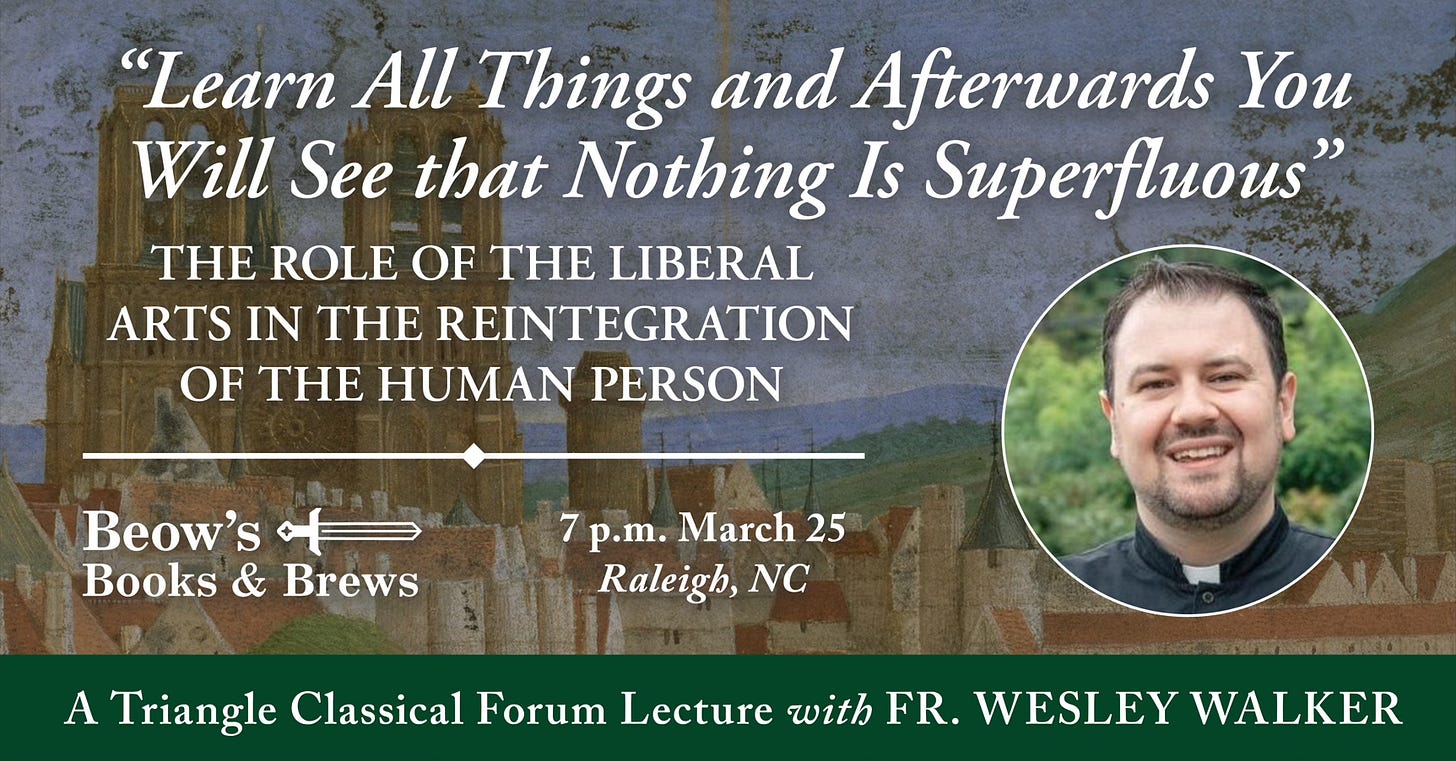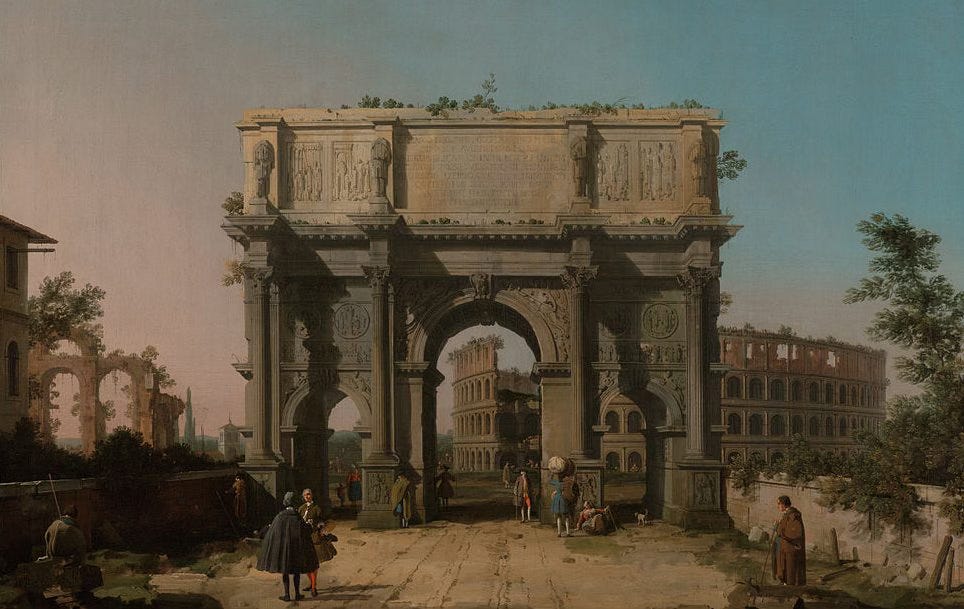The Classical Mind Newsletter for February 2025
Beowulf, "Detail of View of the Arch of Constantine with the Colosseum," "Love (III)," Walker Percy, The Death of the British Catholic Novel, and the Politics of Care
Housekeeping
Our episode on Love in the Ruins by Walker Percy featuring
will be out this coming Tuesday!Our next read is The Journey of the Mind to God by Bonaventure. We will be doing that in a special format which we will announce later.
I will be speaking for the Triangle Classical Forum at Beow’s Books and Brews in Raleigh, North Carolina on March 25 at 7p. I’d love to connect with you if you’re in the area!
Junius will be teaching an online class called “The Father of Lights: A Theology of Beauty” that you can sign up for! The class runs from April 12-May 31, 2025.
Beowulf
It’s been a while, but you might remember our episode on Beowulf. One of the points of debate about this great epic is its cultural and religious background. There are aspects of pagan mythology wrapped up in the story, but you can also find explicit references to Christian Scripture in it as well. Over at Babbel on, Harrison, Harrison Burnette presents a theory that the story reflects a moment of cultural evolution in which the crude paganism of the past had been obsolete, but before Christianity had taken hold. It’s a fascinating theory. Give it a read!
“Detail of View of the Arch of Constantine with the Colosseum” by Canaletto (1742-1745)
In our upcoming episode, we discuss the idea of ruins quite a bit. Ruins became a common theme for painters during the Renaissance which seems to fit with their larger projects. In Daily Art, Maya M. Tola surveys various paintings from the Renaissance that feature ruins.
I like this particular piece because Canaletto, a Venetian painter famous for cityscape paintings, captures two iconic ancient Roman monuments, the Arch of Constantine and the Colosseum in an 18th-century urban environment. The focal point is the Arch while the Colosseum is partially obscured. Most of it is visible to the right of the arch but some of it is visible through two of the openings in the archway. The way the lines run in the center draw us through the Archway to see the Colosseum while the figures in the painting, who seem oblivious to these two magnificent buildings and all the history they represent, emphasize the scale of these monuments. The lighting of the painting is soft and natural which makes it feel real.
The juxtaposition of what has come before and what currently is grabs my attention the most. The ruins are in a state of decay and yet life continues around them. We will see a similar theme in Love in the Ruins. Even amidst the dilapidation of our world, we can still find love.
Speaking of love…
Keep reading with a 7-day free trial
Subscribe to The Classical Mind to keep reading this post and get 7 days of free access to the full post archives.




